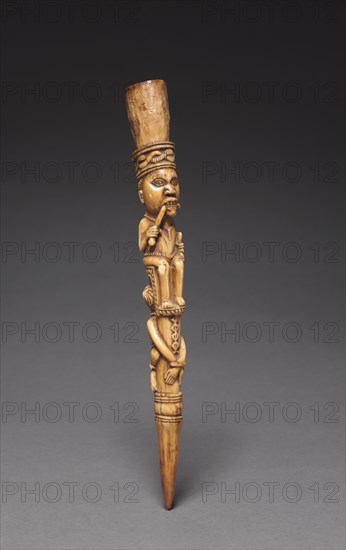
Sujet
Scepter, late 1800s-early 1900s. Creator: Unknown.
Légende
Scepter, late 1800s-early 1900s. Used by male chiefs, ivory scepters were both symbols of status that indicated worldly authority and religious emblems that suggested supernatural influence. In Yombe society until the early 1900s, the aggressive side of a chief?s authority was dramatized in spectacular public executions. These scepters depict a chief enthroned on the bound body of a criminal destined for such a death. The use of ivory implies that the chief has the fatal power of an elephant. His hairstyle most likely derives from that worn by Portuguese sailors, and he chews a bitter root locally known as munkwisa, administered to persons suspected of witchcraft. A package of various medicines mixed with a resinous material would have been enclosed within the container extending from the figure?s head. Thus charged with potent ingredients, the scepters endowed their owners with specific supernatural powers.
Crédit
Photo12/Heritage Images/Heritage Art
Notre référence
HRM19G03_257
Model release
NA
Property release
NA
Licence
Droits gérés
Format disponible
48,0Mo (2,3Mo) / 27,5cm x 43,7cm / 3252 x 5161 (300dpi)